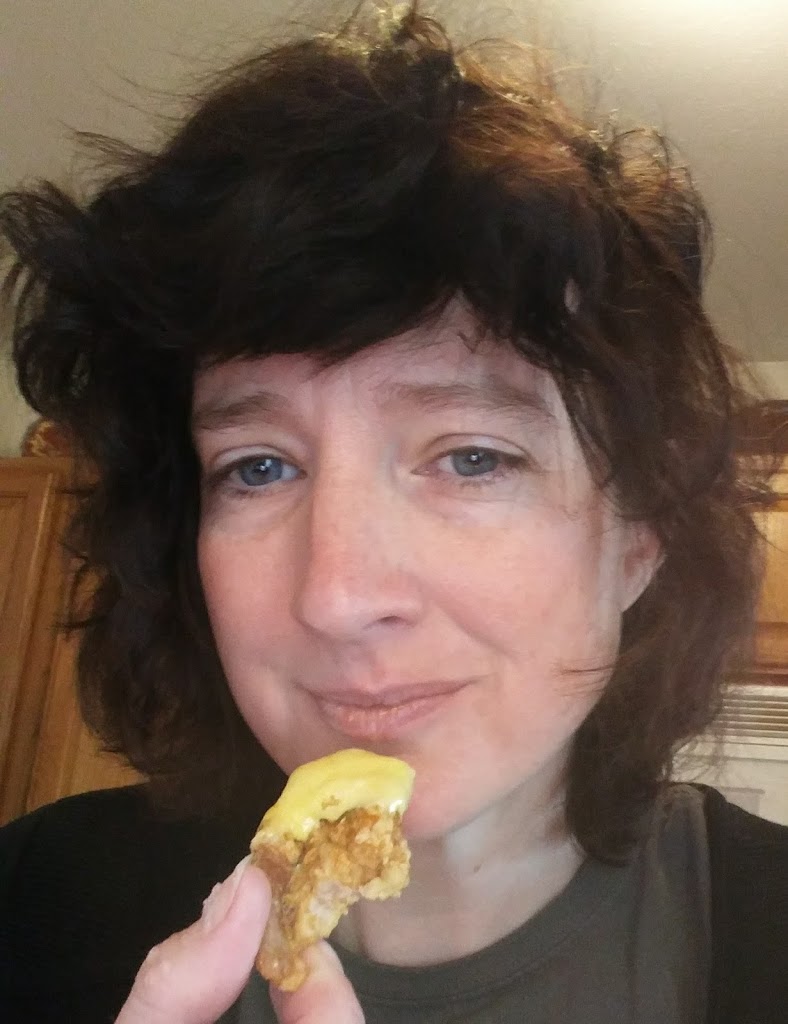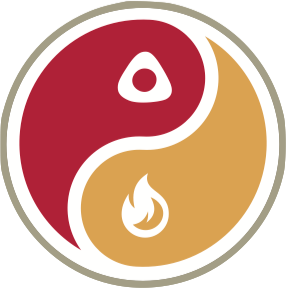Pork Fat Hollandaise
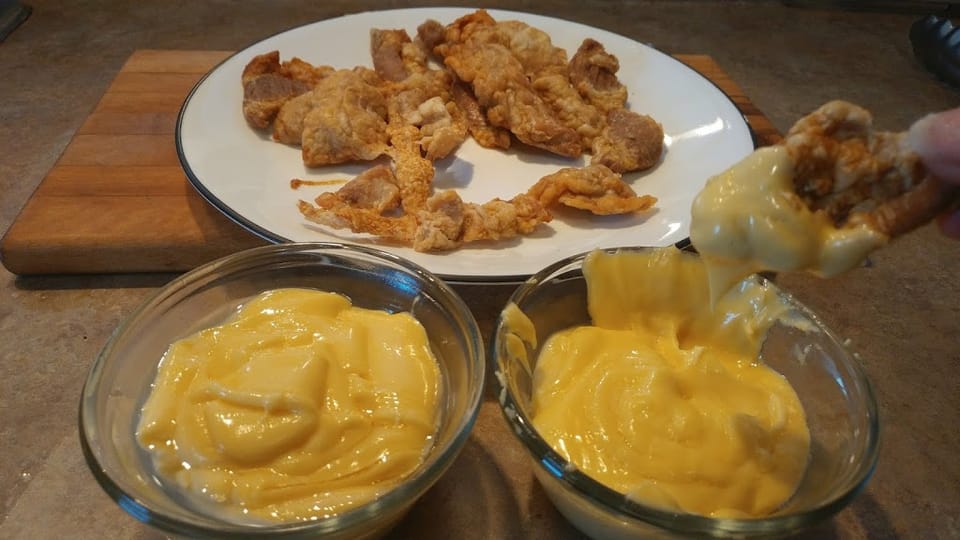
Since the early days of my carnivorous life, I’ve been wishing for something like mayonnaise to eat with leaner meat. Heaven forbid I should end up with leftover chicken breast, because I cooked the whole beast and the wacko lean-eaters didn’t finish it off, for example.
I tried a few times to make mayonnaise with bacon fat, but my results were inconsistent. Sometimes it broke, and even when it didn’t, it never turned out as delicious as one would think it should. Come on, it’s bacon. It ought to be divine! Yet, it remained dissatisfying. For one thing, I always found the vinegar or lemon juice to overpower the delicate taste. For another, because I hadn’t yet learned to roast bacon in the oven, the nearly inevitable bits of burn flavour from the pan were somehow always accentuated in an unpleasant way. The bottom line was nobody, not even I, wanted to eat it.
Once I discovered that I like to eat plain tallow, lard, or schmaltz on meat, or even just on a spoon, I more or less forgot about the idea, until recently, when I started wishing for it again.
The first thing you have to deal with when making carnivorous mayonnaise is the fact that animal fat is not usually pourable at room temperature. So you have to melt it first. One day, I suddenly thought about hollandaise sauce, which is basically mayonnaise but made over heat with melted butter instead of oil. The gears began turning.
In mayonnaise, it is recommended that all the ingredients are at room temperature, but in hollandaise sauce we heat the yolks about as much as possible without actually cooking them. The reason they need to be warm is that the proteins in yolks are tightly folded, and heat allows them to unfold enough to be able to surround the fat droplets and emulsify them. If they unfold too much, they start binding with each other irreversibly, and you get scrambled eggs. The reason for heating the yolks first, then, is that warmer yolks allow more emulsion, but you have to be careful.
The reason for the addition of acid took me longer to discover. There are a lot of sites claiming it’s to kill bacteria in the raw yolk. I don’t really buy that. I doubt it would be effective and anyway I’m notreally concerned about it. Others mentioned that it would add surface area to increase emulsion. While that’s plausible, you could just as easily add water. I was more persuaded by people who admitted they were doing it simply for taste. That’s a fine reason, if you are into it. However, according to Jacob Burton of Stella Culinary, the real reason is that yolks normally curdle somewhere between 71-76°C, but acid raises the curdling temperature to 90°C, which gives you more of a safety net.In my first experiments with bacon fat hollandaise, I didn’t bother with acid, and I still prefer it without. However, I did break it a few times by pouring the fat straight from the oven. Now I know better, and I’ve finally found a use for my old candy thermometer, which is one of those tools from the bad old days that I’ve kept around for no prior reason other than that I’m a recovering hoarder.
Here’s what I do to make hollandaise from animal fat, in this case using pork fat I bought from the butcher for 99¢/lb. I’ve tried butter, tallow, and blends of the three. Next time I plan to try schmaltz.
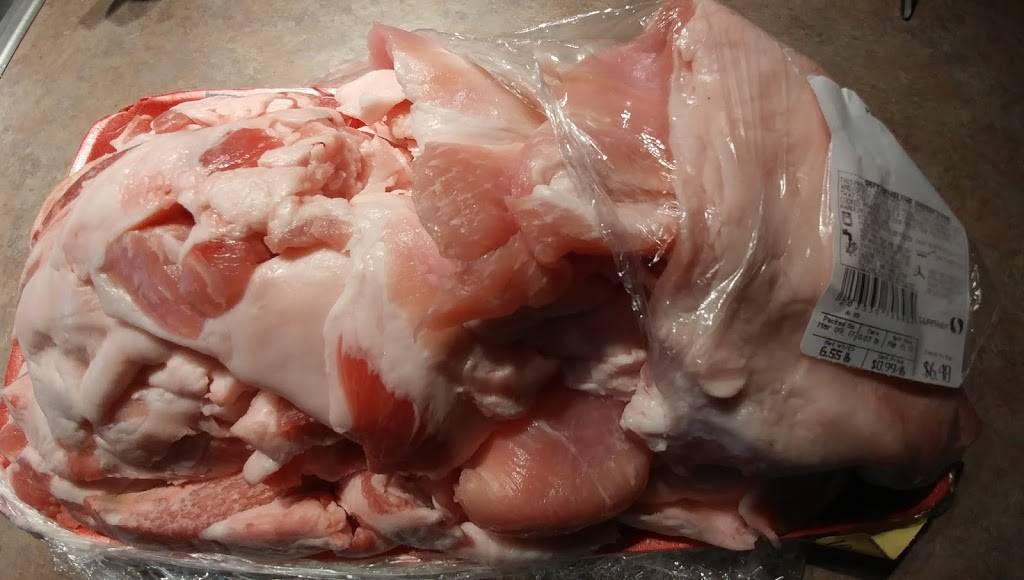
I rendered some of the fat by roasting for 20 minutes at 475°F (the pan was initially full, but it shrank).
I took off the crispy pork pieces, and left the fat to cool for a while. Then I poured the liquid gold into a small bowl easier to pour from.
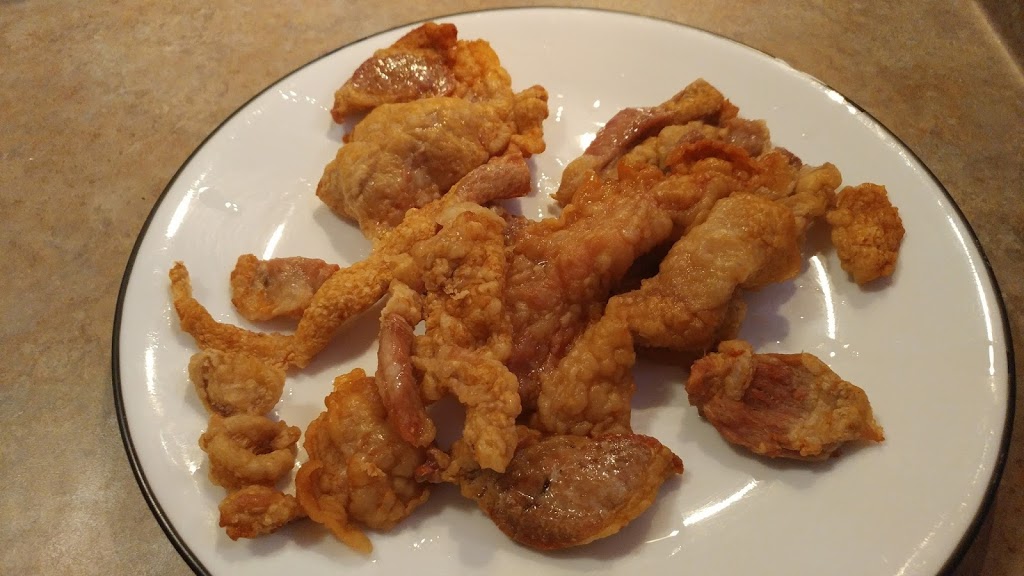
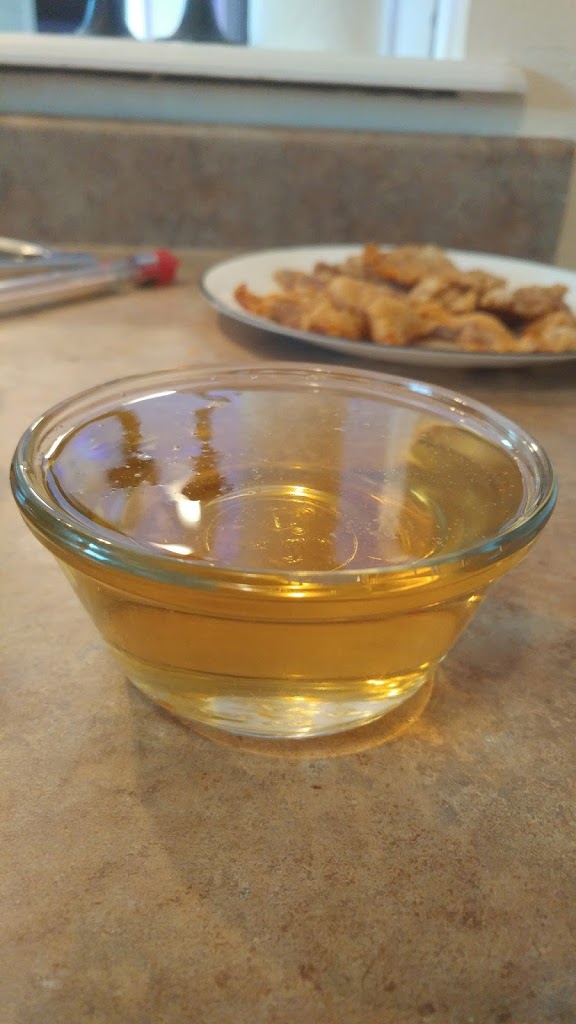
I used an immersion blender to blend four yolks, with the blending cup itself immersed in a bowl of boiled water. Then once they were as thick as they were going to get, I drizzled in all the pork fat, about 6oz.
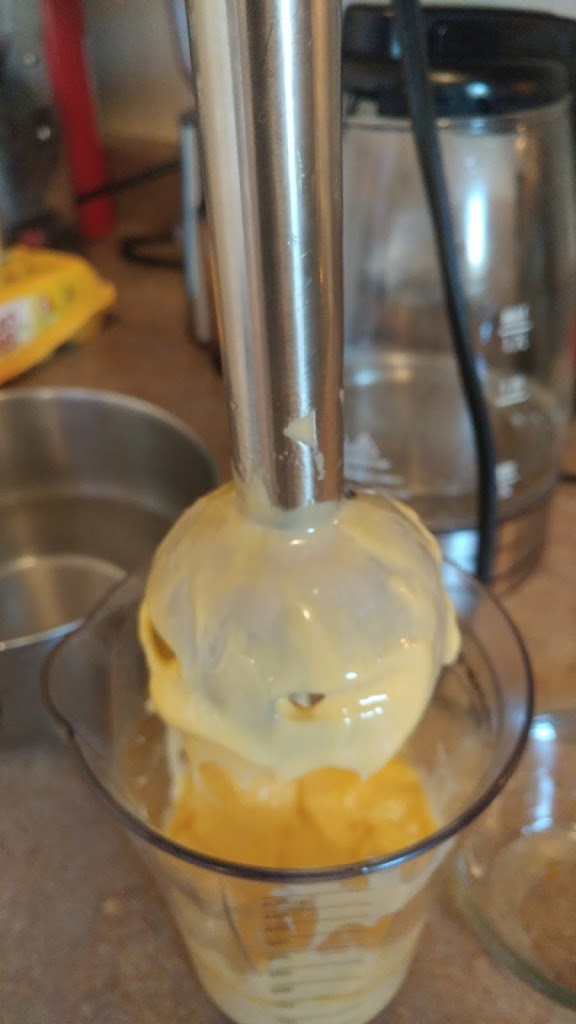
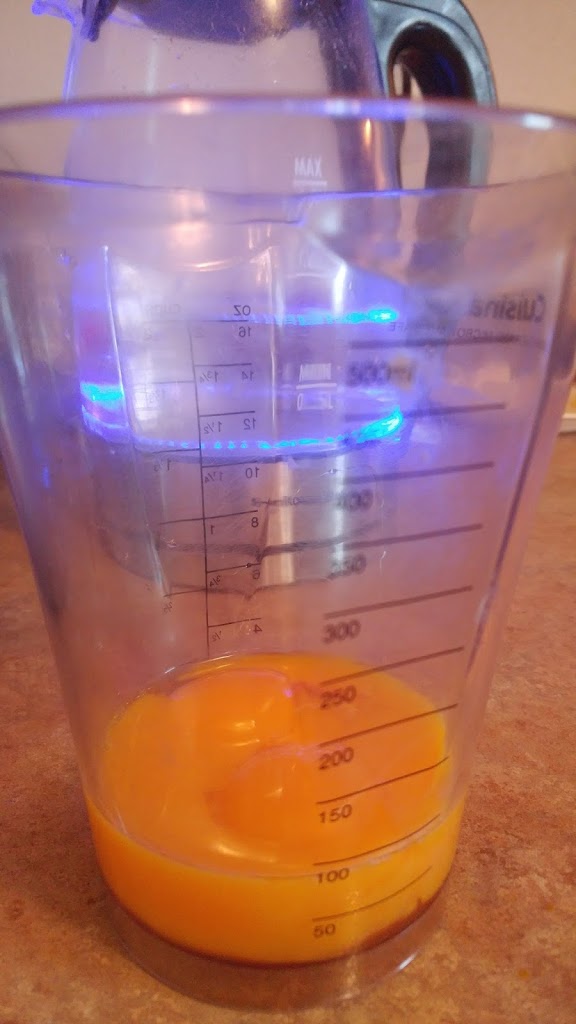
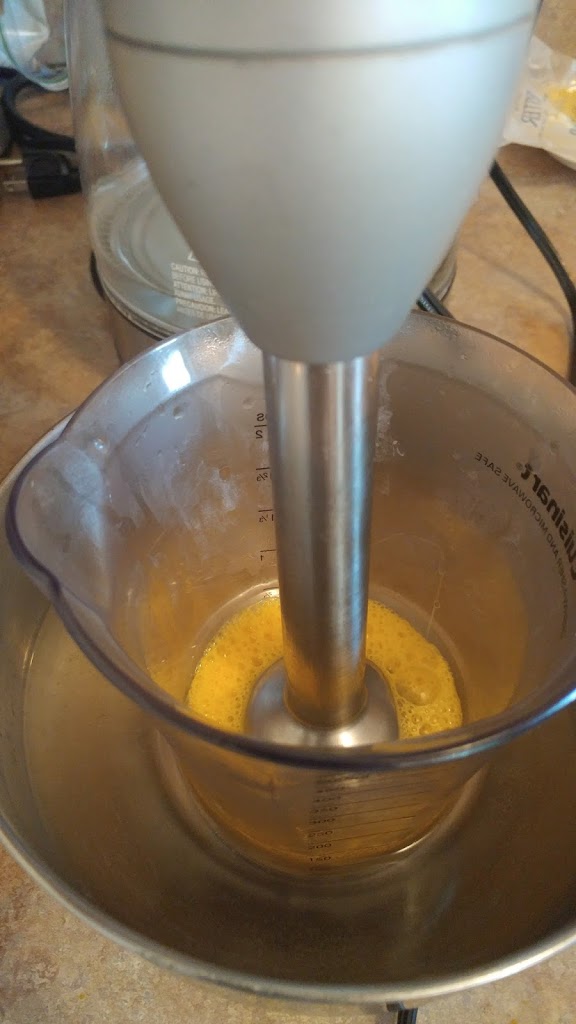
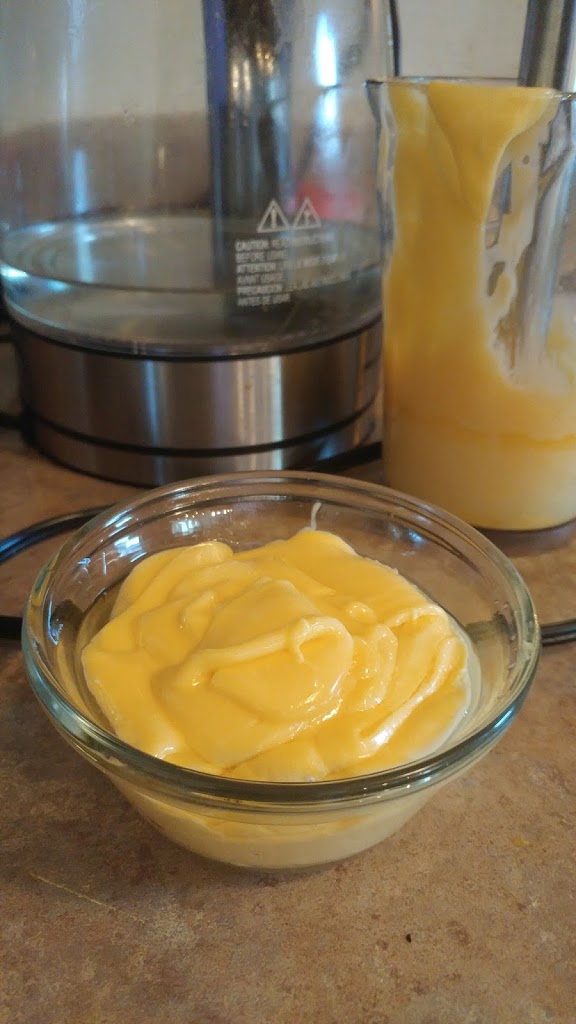
It works beautifully, and it’s easy, but best of all, I like it! (And so do my children if I happen to leave any unfinished.)
